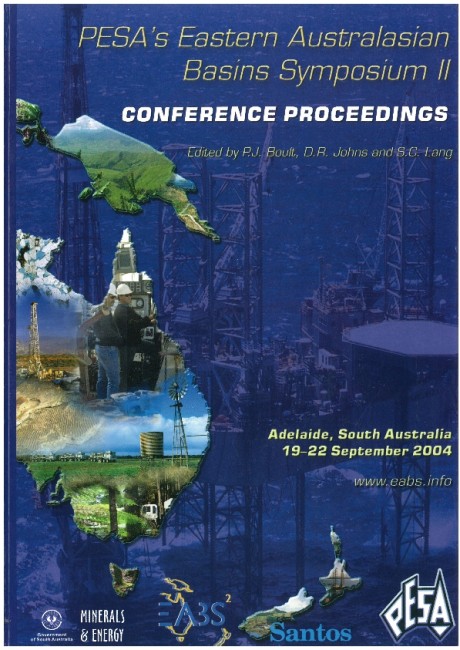Publication Name: PESA's Eastern Australasian Basin Symposium II
Authors: C.I. Uruski
Date Published: December 2004
Number of Pages: 29
Reference Type: Book Section
Abstract:
In recent years, data have been gathered and knowledge accumulated about the geology of the Taranaki Basin frontier. Historically, Taranaki Basin has been considered to consist of the Taranaki Peninsula and the adjacent continental shelf, out to the shelf edge and as far north as 38?S. Beyond the shelf edge in the head of the New Caledonia Basin is the deepwater part of the Taranaki Basin. North of 38?S is the Northland Basin, but the boundaries between the three areas are artificial. Recent seismic and drilling results indicate that there is no geological boundary between Northland and Taranaki or the deepwater and Taranaki basins.The Astrolabe survey of the deepwater Taranaki Basin was acquired by TGS-NOPEC in 2001 and interpreted by GNS. It showed that the fluvial Cretaceous successions of Taranaki have deltaic and marine equivalents, similar to the Golden Beach Group of the Gippsland Basin, and that they overlie an older succession of sediments. The older succession is tentatively correlated with the Strzelecki Group of Gippsland and an equivalent of the Gippsland Jurassic Beds was also proposed.
In 1999, Conoco (now Conoco-Phillips), Inpex and Todd drilled Wakanui-1, in offshore Northland. which revealed a possible Jurassic petroleum system that may also extend into the deeper parts of the deepwater Taranaki Basin. This well, together with more than 7,000 km of seismic data acquired between 1995 and 1998, became open-file when the large Petroleum Exploration Permit (PEP) 38602 was relinquished on 1 April 2003. Recently, the seismic data from the block were re-processed by Spectrum in the UK and interpreted by GNS, revealing more information about the petroleum geology of the region.
It appears that the Taniwha Formation of Albian age, initially identified in Northern Taranaki, also extends into the Northland region, where it and the Jurassic Murihiku Group were thrust into the basin by Paleogene movement on the Northland Thrust. Late Cretaceous sediments also appear to be present within the Northland depocentre and the succession from the Middle Jurassic to the end of the Cretaceous appears to be mature. Many drape structures are observed across possible Jurassic and Cretaceous extensional fault blocks.
The thick mature sedimentary succession, numerous Cretaceous rift structure and later inversion structures resulting from Paleogene and Neogene tectonic events present a range of play types. New Zealand's Northwest Frontier has something to offer most companies, from the possibility of giant accumulations to shallow, lower risk targets, such as Todd's Karewa discovery.


